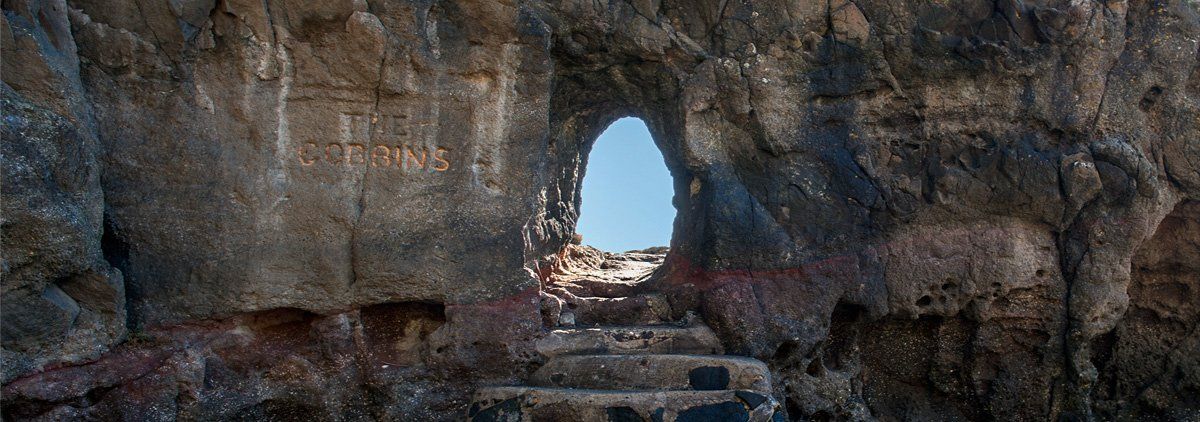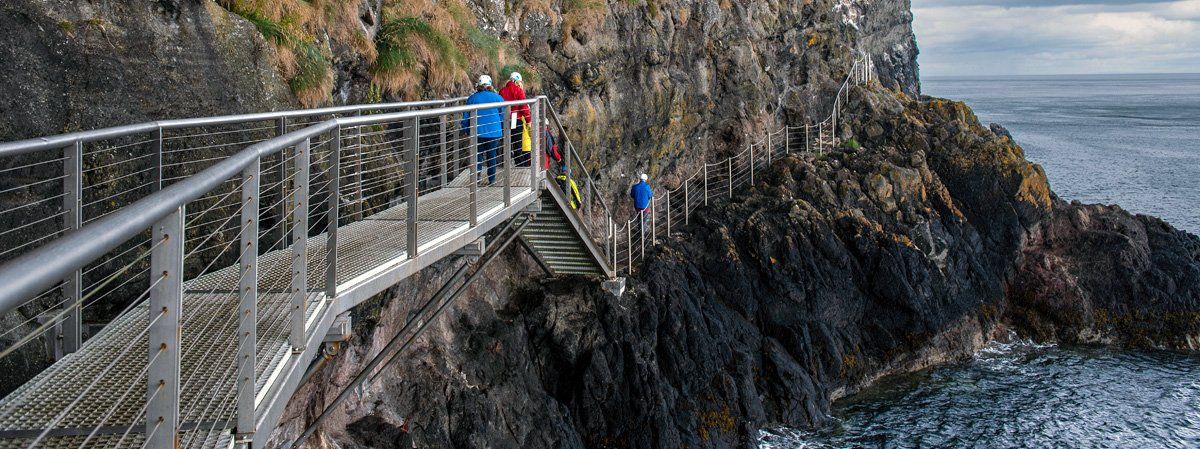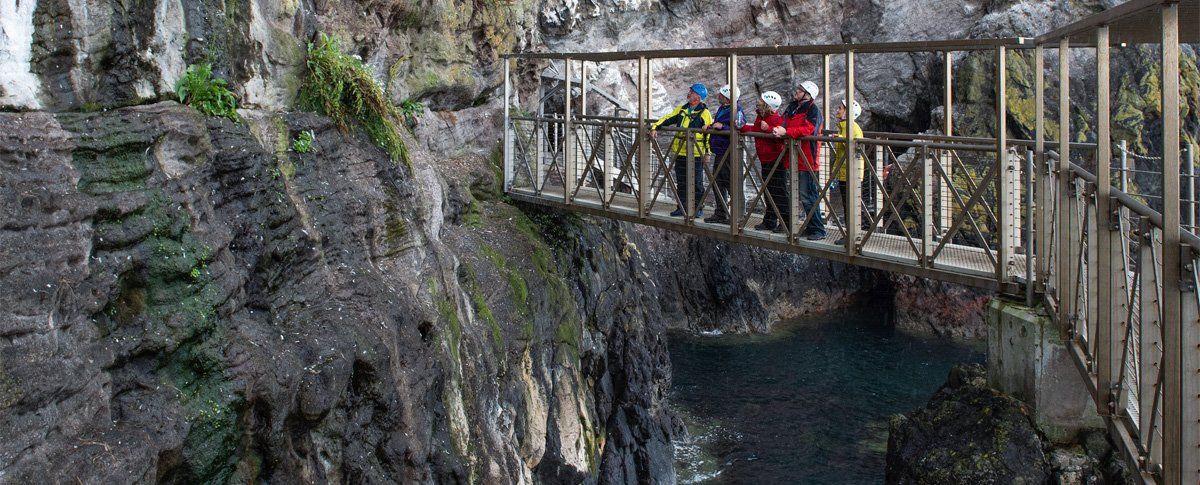The Gobbins
The image above was taken before any renovation took place. The Gobbins was one of the most unique, challenging and visionary project undertaken in Ireland and as one the most challenging for Berkeley Deane Wise
who designed and overseen its construction as Chief Engineer of the Belfast & Northern Counties Railway. This was built to be one of the major tourist destinations in Ireland and it achieved its objective while bolstering Whitehead as a railway excursion destination. You could travel from London by train to Stranraer then take the steamer over to Larne and train to Whitehead, its popularity attracted people from as far away as Europe. In memory of Berkeley Deane Wise two cliff features carry his name, Deane’s Head and Berkeley Point.
The Gobbins Path Walk followed the lower part of the cliffs for approximately two miles, an engineering masterpiece, the path was cut out of the rockface and wherever possible the steps are cut to be part of the cliff, it passes across the mouth of sea caves, descends into a subterranean cave and crosses chasms on suspended walkways. The original steel cantilever, tubular bridges and walkways were built in Belfast and brought on barges to be lifted into place. The entrance to the path was cut through the headland. (photo at top of page) It was one of the most remarkable engineering achievements of its day and even by today's standards, the newly reconstructed form still has the same wow factor to it.
The original plan of Berkeley Deane Wise was to continue the path to Heddle’s Port, a total distance of 3.5 miles where it would climb back up to the clifftop and loop back forming a circular walk but this unfortunately never happened due to Berkeley becoming ill and having to eventually retire from his work. A short section was extended to cross the entrances of the Seven Sister’s Caves with suspension bridges, this section, unfortunately, does not form part of the current path which stops well before it. Today you still have to backtrack the way you came to exit. Hopefully, in the future, the full vision of Berkeley Dean Wise will be realised and will take to its full potential.
As previously mentioned the attraction was driven by the railway and the development of Whitehead, at its peak the Gobbins equalled the Giants Causeway in popularity. It opened in 1902 and remained a major attraction until the outbreak of the Second World War after which it gradually fell into disrepair and was officially closed in 1960 but you could still unofficially visit and walk part of it. Today with EU funding it has been restored to a point before the Seven Sisters Caves with new viewing platforms at the start of the walk and on the clifftop. Access is from a newly built reception and Information centre where visitors are taken by minibus to the walk. For more information visit their website here.




